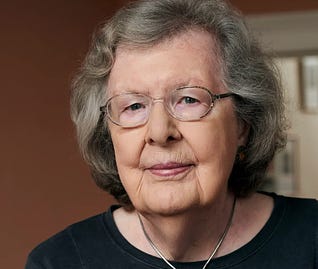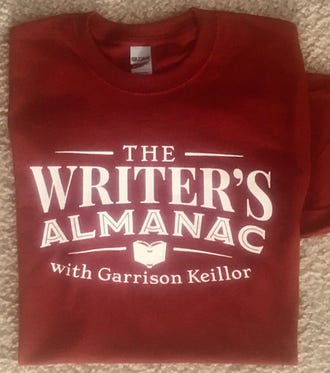|
 |
“Field Poem” by Gary Soto from Selected Poems. © Chronicle Books, 1995.
ORIGINAL TEXT AND AUDIO - 2017
Today is St. Patrick’s Day, the annual feast day celebrating a patron saint of Ireland.
St. Patrick was born around the year 385, in a village in Wales. When he was 16, a group of Irish pirates raided his village and took many of the young men back to Ireland to work as slaves. Patrick worked for six years as a herdsman in the Irish countryside. In his sixth year, he escaped and made his way back to Wales. But, according to his autobiography, soon after he got back home he heard a voice telling him to go back to Ireland and convert the Irish to Christianity. That’s eventually what he did, but first he went to France to visit monasteries and study religious texts. After 12 years in France, he went back to Ireland, where he founded monasteries, schools, and churches and converted much of the island to Christianity.
Parades are a large part of the day’s celebrations, and New York City’s is the largest in the world, with the 69th Infantry Regiment leading 150,000 marchers up Fifth Avenue.
The marchers will include firefighters, police officers, emigrant societies, New York politicians, high school bands, and community service organizations. The first St. Patrick’s Day parade in New York was on March 17, 1762. Boston has been celebrating St. Patrick’s Day since 1737. And since 1961, Chicago has been dyeing its river green for the holiday.
The city of Dublin is a relative newcomer to the huge parade festivities, but the celebration there has been taking off in recent years. Dublin’s first St. Patrick’s Day Festival was held in 1995 to boost tourism. Since then, the parade has grown into a weeklong event that includes a symposium with lectures on Ireland’s economic success, issues of Irish identity, and the future of the Irish state. About 500,000 people turn out to witness the Dublin parade.
It’s the birthday of playwright Paul (Eliot) Green, born near Lillington, North Carolina (1894). Green grew up on a farm, where he worked in the fields alongside black laborers, whose stories inspired many of his dramas. He began writing one-act plays while he was a student at the University of North Carolina-Chapel Hill. The No ’Count Boy (1924) won the Belasco Cup in New York City and established Green’s place as an important playwright outside of the South. His Broadway play In Abraham’s Bosom (1926) won the Pulitzer Prize for drama. Despite his success in New York, he disliked what he labeled the commercial theater of the city, choosing instead to produce something he called “symphonic dramas” — pieces combing drama with dance, music, poetry, and folklore, and intended for the outdoors. (Green was a self-taught violinist who composed all the music for his pieces.) In the 1930s, Paul Green did a stint in Hollywood, where he wrote films for Clark Gable, Greer Garson, and Bette Davis, among others. Green wrote what Bette Davis considered to be her favorite line: “I’d like to kiss you, but I just washed my hair.”
It was on this day in 1941 that the National Gallery of Art opened in Washington, D.C. The National Gallery was the project of Andrew Mellon, a wealthy industrialist and Secretary of the Treasury. In 1880, 25-year-old Mellon traveled to Europe with his friend Henry Clay Frick, a fellow Pittsburgh businessman who would go on to become another of the nation's richest industrialists. This was the first trip abroad for them both, and they came back enthusiastic art collectors.
Mellon bought pieces slowly over the decades. In the late 1920s, he served as ambassador to Great Britain, and he was inspired by the National Gallery in London to create something similar in the United States. In 1930, he had the rare opportunity to purchase art from the Hermitage, the greatest art museum in Russia. Stalin had ordered museum employees to raise money for the government by selling off valuable pieces. The sale was a secret, but the news was spread to select foreign collectors. Mellon purchased 21 paintings, including work by Raphael, Rembrandt, Botticelli, Titian, and Jan van Eyck.
In 1936, Mellon wrote to President Roosevelt offering to donate his collection, as well as $15 million to build a museum that would house it. Mellon had a vision for a national museum of the highest quality, and he insisted that it should not be named after him, figuring that other art collectors would be more likely to donate to a place called the National Gallery of Art than the Mellon Gallery. His strategy worked, and he managed to talk many other prominent collectors into donating their art.
Mellon chose the architect John Russell Pope to design the new building. Pope designed it in the Neoclassical style, with wings extending from a central rotunda, and incorporating gardens and fountains. It was built with pink marble from Tennessee and polished limestone from Alabama and Indiana. The details of each gallery matched the culture and era — dark wood paneling for the 17th-century Dutch work, elaborate moldings and plaster walls for the Italian Renaissance, etc.
Construction began in June of 1937. Neither Andrew Mellon nor John Russell Pope lived to see it completed — they died within 24 hours of each other in late August. The building was finished at the end of 1940, and the next few months were spent installing art. Mellon had given 126 paintings and 26 sculptures, and hundreds of other works had already come in from other donors. At the time of its opening, many galleries were empty, because Mellon wanted a space that could grow substantially as more art was given. His vision went even beyond the building — he asked Congress to set aside an adjacent piece of land so that another building could be constructed some day. Sure enough, by 1966 the original building was full, and construction began on a second building — this one geometric and modern to house the modern art collection.
When the National Gallery opened on this day in 1941, President Roosevelt gave the dedication speech. He said: "To accept this work today is to assert the purpose of the people of America — that the freedom of the human spirit and human mind which has produced the world's great art ... shall not be utterly destroyed."
Admission is always free to the public. More than 4.5 million people visit the National Gallery each year to view its 120,000 pieces of art.
It's the birthday of novelist and children's author Penelope Lively, born in Cairo, Egypt (1933). She's the author of the novels The Road to Lichfield (1977), Treasures of Time (1979), and According to Mark (1984), among many others.
She grew up with her parents in a suburb of Cairo and visited the pyramids every week. She studied history at Oxford and was planning to become a social historian. But when she got married and had kids, she found she enjoyed reading to her children so much that she wanted to write children's books herself. Her book The Ghost of Thomas Kempe (1973) won the Carnegie Medal, Britain's highest award for children's literature. A few years later, she started publishing fiction for adults, and her novel Moon Tiger (1987) won the Booker Prize.
In Moon Tiger, she wrote: "We open our mouths and out flow words whose ancestries we do not even know. We are walking lexicons. In a single sentence of idle chatter we preserve Latin, Anglo-Saxon, Norse: we carry a museum inside our heads, each day we commemorate peoples of whom we have never heard."
Be well, do good work, and keep in touch.®
Support the legacy of The Writer’s Almanac and proudly wear this t-shirt
You’re a free subscriber to The Writer's Almanac with Garrison Keillor. Your financial support is used to maintain these newsletters, websites, and archive. Support can be made through our garrisonkeillor.com store, by check to Prairie Home Productions P.O. Box 2090, Minneapolis, MN 55402, or by clicking the SUBSCRIBE button. This financial support is not tax deductible.


